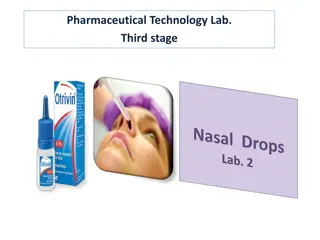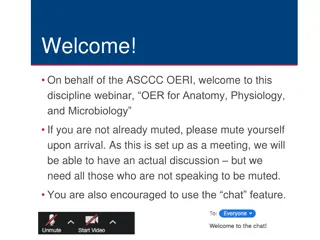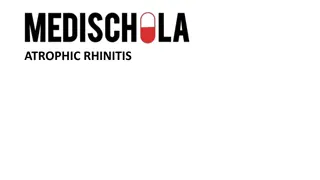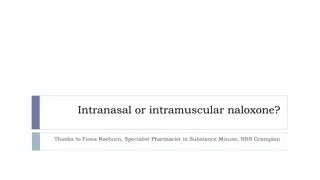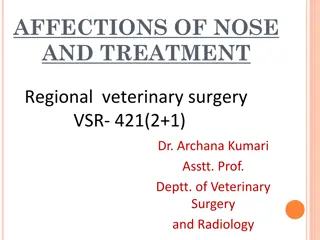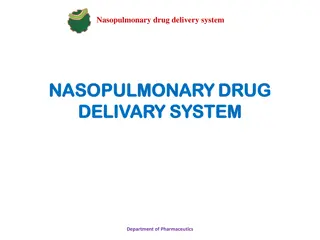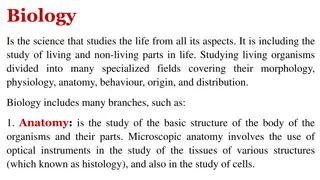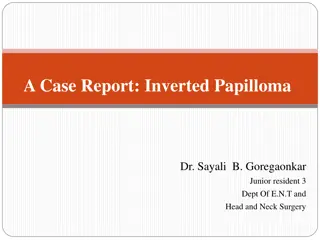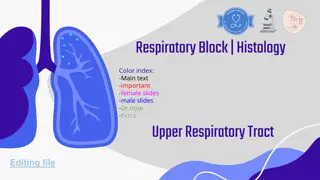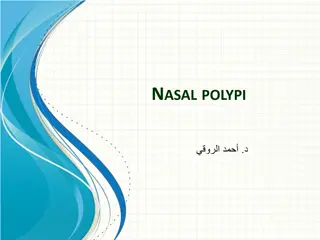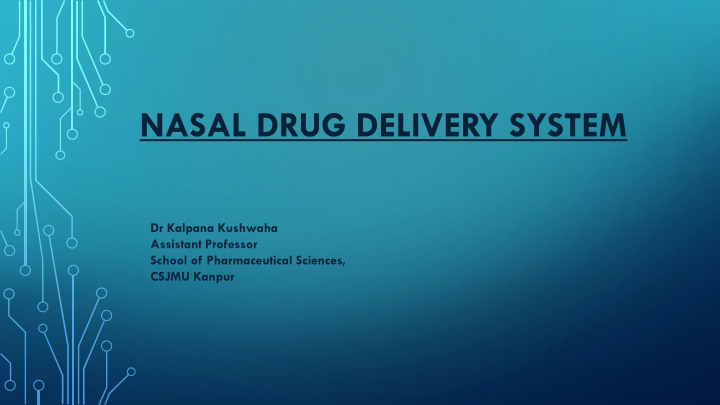
Nasal Drug Delivery System: Anatomy, Physiology, and Applications
Nasal drug delivery is a promising route for drug administration, allowing for both localized and systemic effects. This system explores the anatomy and physiology of the nose, highlighting the merits, limitations, and factors affecting absorption. Learn about the benefits of intranasal delivery, its potential for faster absorption, and the challenges it presents. Discover how the nasal cavity provides a unique pathway for drug delivery and its implications for various therapeutic applications.
Download Presentation

Please find below an Image/Link to download the presentation.
The content on the website is provided AS IS for your information and personal use only. It may not be sold, licensed, or shared on other websites without obtaining consent from the author. If you encounter any issues during the download, it is possible that the publisher has removed the file from their server.
You are allowed to download the files provided on this website for personal or commercial use, subject to the condition that they are used lawfully. All files are the property of their respective owners.
The content on the website is provided AS IS for your information and personal use only. It may not be sold, licensed, or shared on other websites without obtaining consent from the author.
E N D
Presentation Transcript
NASAL DRUG DELIVERY SYSTEM Dr Kalpana Kushwaha Assistant Professor School of Pharmaceutical Sciences, CSJMU Kanpur
CONTENTS Introduction Anatomy and Physiology of Nose Merits and Limitations Factors affecting Nasal Absorption
INTRODUCTION In ancient time Ayurvedic system of medicine used nasal route for administration of drugs and the process is called as NASYA . Nasal route has been used for local effects of decongestants but in recent time it is being considered as preferred route of drug delivery for systemic effect. Various proteins and peptides have shown a good bioavailability through this route. Nasal mucosa has been considered as a potential administration route to achieve faster and higher level of drug absorption. Drugs are administered to nasal cavity for: Localized Systemic Delivery Vaccine Delivery Possible direct nose-brain Delivery
The nasal cavity is divided into two symmetric halves by the nasal septum, a central partition of bone and cartilage. The nasal vestibule, the respiratory region and the olfactory region are the three main regions of nasal cavity. The lateral walls of the nasal cavity includes a folded structure which enlarges the surface area in the nose to about 150 cm square. The nasal cavity is covered with a mucosal membrane i.e. known as nasal mucosa. During inspiration, the air comes in contact with nasal mucosa and particles such as dust and bacteria are trapped in mucous. Additionally, the inhaled air is warmed and moistened as it passes over the mucosa. The submucosal zone of nasal mucosa directly connects to the systemic circulation, thus avoids first pass metabolism.
MERITS 1. Drugs can be easily administered to the unconscious patients. 2. Compared to oral medications, intranasal delivery results in: - Faster delivery to the blood stream - Avoid metabolism by stomach acid intestinal enzymes - Avoid hepatic first pass metabolism 3. Compared to IV medications, intranasal delivery results in: - Comparable blood levels depending on the drug and dose - More convenient for patients of long term therapy 4. The nasal route is an alternate to parenteral route, especially for protein and peptide drugs.
Limitations There is possibility of nasal irritation. Nasal cavity provides smaller surface area for absorption as compared to GIT. Once administered, rapid removal of the therapeutic agent from the site of absorption is difficult. Pathological conditions like cold, allergies etc. may alter the nasal bioavailability of the drug substance. The histological toxicity of the absorption enhancers used in nasal drug delivery system.
Factors affecting Nasal Absorption Chemical nature of drug substance Polymorphism Particle size Molecular weight Solubility and Dissolution rate Nasal Ph Nasal Enzymes and Nasal secretions
REFERENCES J. Tortora, Derrickson, 2009, Principles of anatomy and physiology ,12th edition, volume-1, John wile and Sons PVT. Ltd., p.n. 600-601 www.britannia-pharma.co.uk www.sciencedirect.com M. Alagusundara et al. Nasal Drug Delivery System- an overview Int. J. Res. Pharm. Sci. Vol-1, Issue- 4,454-465, 2010.


